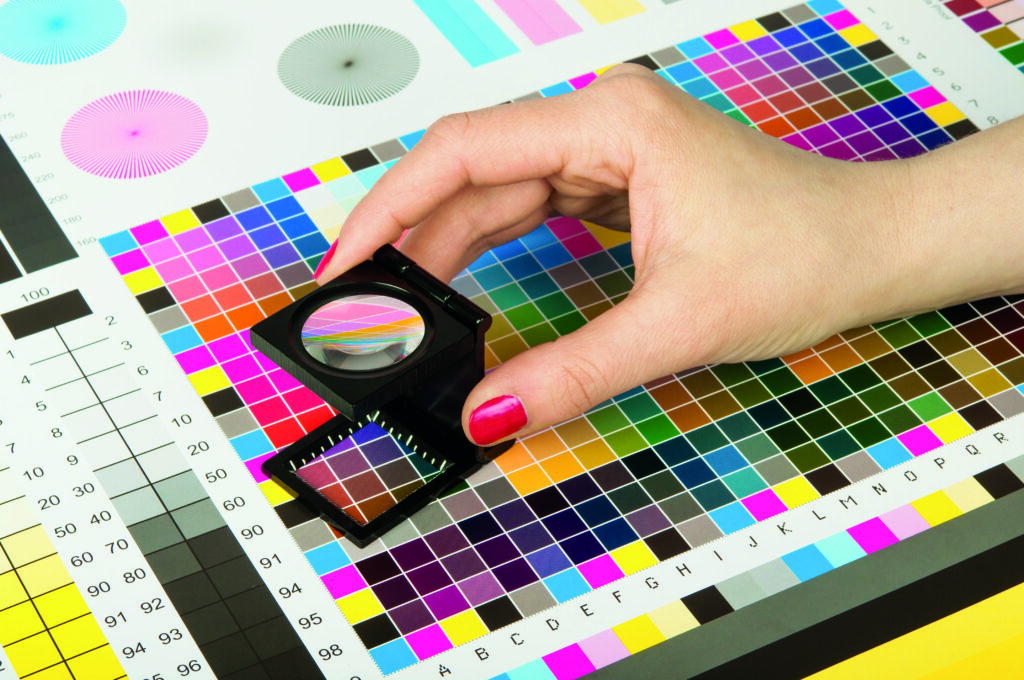
Features
Colour Control
Premedia
Brand colour matching
CxF simplifies the process of printing the correct tone
April 29, 2024 By Angus Pady
 Photo © Bormotov | Dreamstime.com
Photo © Bormotov | Dreamstime.com In the world of branding and marketing, colour is a powerful tool that conveys emotions, sets the tone, and creates lasting impressions. Whether you’re designing a business card or billboard, or you are a brand owner, getting your brand colours right is crucial.
When it comes to brand colour matching in print, you’ll come across several options: CMYK, RGB, Hexadecimal, CIE Lab, Pantone and Spectral. There are a few factors to consider when determining the best option for a project.
CMYK is device dependent, meaning every CMYK build is specific for a particular output device. If we print Coca-Cola red on a digital device that has an accurate ICC profile, the RIP will convert CMYK values so that the red visually matches the incoming CMYK values. If we print the same colour on an offset press, the plate curves will dictate the final CMYK values. As we can see, specifying a colour in CMYK is not going to work when you have more than one device as each machine needs a unique CMYK build.
RGB is great for pictures but does not work for brand colours, as the colour consists of additive colours and still needs to be converted to CMYK.
Hexadecimal is fine for specifying web colours. However, it’s a terrible choice for brand colours.
Pantone is a great choice when it comes to spot colours. In our industry, we have adopted this process. It is also well established with ink vendors and brand owners. These standardized ink colours ensure your brand colours remain consistent across various media. If you are working in packaging, check out Pantone Live.
Let’s say you’ve chosen a vibrant shade of orange for your logo. With Pantone, you can specify the exact shade (for instance, Pantone 165 C) to your printer. The press will use a specific ink formulation to match that orange consistently. However, the same Pantone 165 C sent to your digital device with only CMYK inks is going to look dull.
Brand colours, often expressed as Pantone colour names, are generally specified using CIE Lab values. The Lab value describes how the spot colour looks under certain lighting conditions (D50). It does not describe how the mid-tones should behave nor provide any information about what the colour looks like under other lighting conditions. This lack of lighting information may cause metamerism, a phenomenon where colours look different when light source changes.
Spectral colour definitions are device independent. This means that they aren’t tied to a specific output such as a press and stock. Spectral colour data provides an extremely precise description of colour properties. This accuracy ensures the desired colour will be reproduced consistently across different printing technologies and substrates. In contrast, CMYK and Lab colour models are dependent on the characteristics of the specific inks, devices used, and substrates, making it harder to achieve consistent colour reproduction.
Spectral data can help mitigate metamerism. By specifying colours in spectral terms, you can choose ink formulations that minimize metamerism, ensuring your brand colours remain consistent in various environments.
When you think of the terms, “Lab,” and “Spectral,” remember that Lab is a single measurement on a specific substrate. Spectral covers the full spectrum of colours on any substrate, and that is the key.
Capturing and implementing spectral data is a bit more challenging. Measuring Lab is easy and fast—one can type the Lab values into an email. You can’t do that with a spectral definition. That is where a CxF (Colour Exchange Format) comes in. CxF is defined in a completely open way so that all aspects of a colour can be communicated, even when the application and the colour communication features required are unknown. This means that every software vendor implementing and supporting CxF can easily and accurately extend the information throughout global workflows. This is indeed the future of brand colour communication.
Angus Pady is a G7-certified expert that has helped customers resolve colour management challenges for over 30 years. He can be reached at angus.pady@fujifilm.com.
This columns was originally published in the January/February 2024 issue of PrintAction.
Print this page